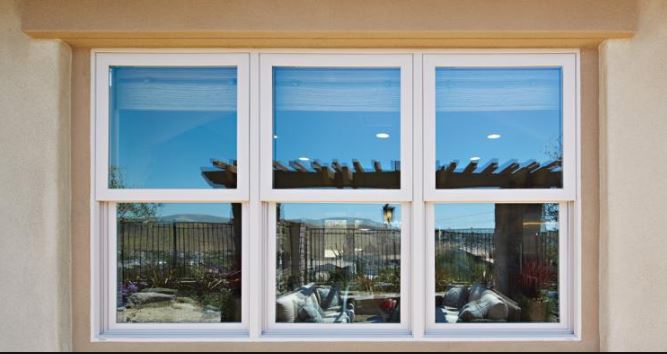Digital Design: How Modern Tools are Revolutionising Interior Design
Interior design has experienced a digital renaissance. Cutting-edge technologies offer unprecedented visualisation capability, efficiency and functionality when remodelling or rethinking living spaces. From augmented reality previews to data-backed sustainability measures, the latest interior design tech expands creative possibilities while being responsible for future-proofing homes.
As London’s top-tier interior design studios can attest, leveraging these modern solutions allows for incredibly personalised, technologically enriched interiors. By embracing what’s newly achievable, designers better actualise goals by balancing aesthetics, utility and long-term viability across remodelling projects of all scales.
Immersive Digital Visualisation
Foremost among recent interior tech advancements are visualisation tools enabling clients to experience conceptual interiors prior to any physical changes. At the vanguard are applications using augmented reality (AR) and virtual reality (VR) to transport users inside digital renderings via smartphone or headset.
Interior design London studio Black & Milk makes 3d visualisation the core of its design process. “With 3d, clients can explore photorealistic manifestations of our proposed layouts and materials as if physically present in their future space,” designer Olga Alexeeva explains. Specialised software considerately renders lighting, acoustics and spatial energy shifts from material finishes and proportions.
Augmented reality likewise provides shareable previews overlaying proposed furnishings and architectural changes onto existing environments through mobile devices for tangible scaling. “AR allows homeowners to creatively rearrange elements until the overall vision clicks,” says Black and Milk Designs Studio.
These immersive digital tools enable designers to meaningfully convey concepts otherwise left to the imagination from static sketches or display furniture that’s unavailable onsite. Determining viability also becomes more instinctual for clients, expediting decision-making by experientially evaluating options hands-on.
Sustainability Simulation
Sustainable design is a growing interior focus, given environmental concerns, usage costs and health factors. New applications enable creatives to model various eco-conscious materials and system integrations digitally before installation using detailed performance data.
AE Design Coop, an interior design leader in London, routinely analyses insulation capabilities, solar power viability, HVAC optimisations and more during concept phases. “We simulate design configurations through energy modelling software to pinpoint the most efficient, environmentally friendly infrastructure for each unique space,” explains sustainability head Jessica Wu.
This methodology, leveraging building information modelling programs, provides a green roadmap quantifying carbon footprints and energy savings from layouts and materials under consideration. Designers can tweak arrangements and components until an ideal equilibrium between aesthetics and sustainability is reached based on measurable environmental impact.
Smart & Connected Spaces
Digital networking now underpins virtually all modern electrical integrations, allowing centralised, automated control over myriad home systems from lighting and music to security, temperature and more. New builds increasingly feature internet-connected fixtures, sensors and outlets constituting “smart homes.”
Watson + Holmes Interiors focuses heavily on engineering homes with seamless digital command of all electronics for comfort, accessibility and conservation purposes. “We design integrated infrastructure, so each component like motorised curtains or underfloor HVAC can be easily monitored and managed from any mobile device,” startup CTO Irene Adler explains.
Networked apps enable comprehensive but user-friendly system dashboards for performance transparency and batch actions like facility-wide shutdowns or climate customisation per room. Digital coordination also provides freedom to reconfigure zones and commands as needs evolve. Smart connectivity promises creative conveniences at manageable complexity.
Complex Made Clear With VR
As home infrastructure gets smarter, owners still want interfaces kept simple. Virtual reality again assists in making convoluted setups digestible. Interactive 3D walkthroughs give virtual access behind walls and under floors to explore wiring and components. Digital guides demonstrate workings and functions in straightforward terms from actual operation perspectives.
“It’s about framing complexity in clarity for the homeowner,” graphic renderer Fiona Erickson declares. “An immersive model mapped to real systems builds confidence through understanding.” VR empowers inhabitants in self-directed exploration minus intimidation.
Bespoke Design via Digital Innovation
Today, next-gen tools foster home environments uniquely moulded to owners’ aspirations through enhanced visualisation capacity, sustainable foresight and intuitive functionality. “Cutting-edge digital resources expand both creative possibility and responsible practice,” interior designer Shaun Andrews asserts.
Informed by data otherwise unavailable, contemporary programs help fashion living spaces equal parts visionary and liveable. They widen the lens for fashioning surroundings precisely aligned with personal priorities and sensibilities while futureproofing through objective modelling guidance.
Digital innovation greases bespoke design.
From augmented window-shopping to green-simulated layouts and smart-wired workings demystified via virtual walkthroughs, breakthrough technologies are transforming interior design’s scope. London studios integrating these solutions across ideation and execution phases demonstrate how modern methodologies can manifest spaces resonating on deeper planes – environments answering essential wants while upholding lasting well-being. Digital tools maximise harmony across subjective and objective interior design factors to craft resonance-rich interiors.


:strip_icc()/BEHR_25.03_COLORTRENDS_TC_LIV_101c-38834c32890e4cae975ce7030623f632.jpg)

